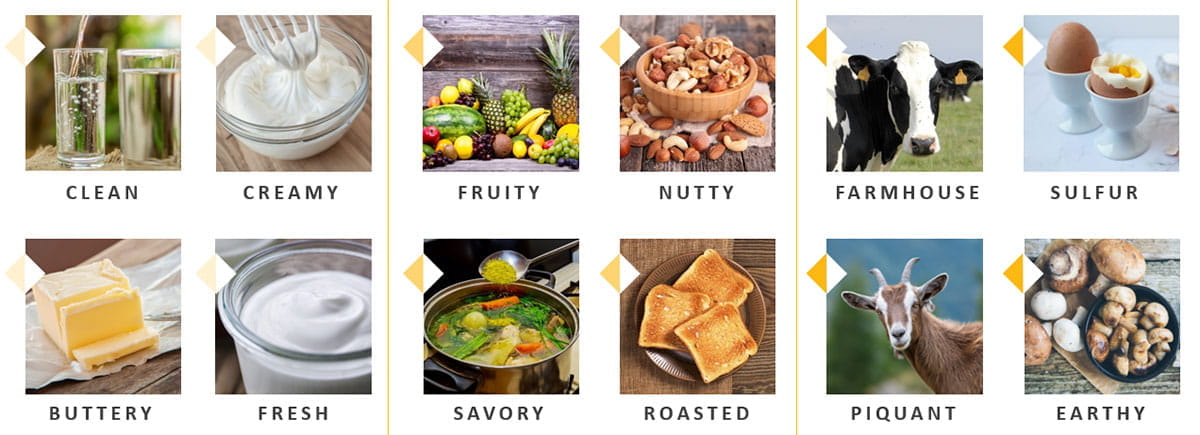may. 15. 2020 08:17 GTM
Flavor is key
What is most important to you when choosing a cheese at your local supermarket or cheese monger – the price or the anticipation of a mouthwatering flavor sensation? Most people choose the latter. In fact, 36% of consumers rate flavor as the most important factor when buying cheese – above brand and price1. This makes flavor profiles a key element in cheese production. Like for so many other great things in this world, we have good bacteria to thank for the addiction-inducingly delicious flavors of cheese.
Good bacteria in ripening cultures
Bacteria play a crucial role in cheese-making. To make cheese, three elements are needed in addition to milk – a starter culture, a coagulant and a ripening culture. It is the ripening culture loaded with good bacteria that is the star of the show when it comes to creating flavor. Some freshly made cheeses taste quite salty and bland, as taste is not developed until during the ripening period.
During ripening, microbes are activated and begin to break down the cheese elements and create flavor.
Decay made delicious
In essence, cheese is the result of decomposition of milk enabled by good bacteria. During ripening of cheese, many biochemical processes take place, which are essential for flavor development. Two such decomposition processes are particularly important for flavor creation: proteolysis (breakdown of proteins) and lipolysis (breakdown of fat).
Cheese is made up largely of casein protein (milk protein), and during proteolysis, these proteins are broken down to their building blocks – amino acids and peptides. The individual amino acids are packed with flavor and enter into further reactions and create more complex, flavorful compounds. However, no single amino acid or peptide with a “cheese-like taste” has been isolated among the about 200 peptides isolated from cheese, and they all play each their role in taste formation. The good bacteria and coagulant secure the right balance between proteolysis and peptidolysis when breaking down the protein – all leading to great tasting cheese. But proteolysis is not the only biochemical process that brings out flavor.
In lipolysis, the fats – lipids – in cheese are broken down. These fats are so-called triglycerides, which consist of three long fatty acid chains connected to a glycerol molecule. It is not until the chains are cut off the glycerol by lipase (the enzyme) and become free fatty acids that flavor is developed. The free fatty acids create flavor and aroma, and their lengths determine the specific flavor profile. The free fatty acids go on and enter into reactions to create a multitude of flavor compounds.
Put simply, these two processes develop the flavor profile of cheeses, and enzymes and good bacteria are the true superstars for breaking down big compounds into their flavorful and aromatic building blocks. But if you want a produce a tangy goat cheese, you cannot just rely on the off chance that the biochemical processes will leave you with that exact flavor profile. Instead, you rely on flavor design and tailored cultures.
Flavor design
The final flavor profile of a cheese depends, among other things, on the specific microbiota of the ripening culture added during production, meaning that you can customize flavors by selecting specific ripening cultures and lipases. Their microbiota influence the biochemical processes and consequently the final flavors. Ripening cultures allow for a wide variety of unique flavor profiles, ranging from creamy to earthy over fruity or savory, and prevent the formation of bitterness in the cheese. Here is a glimpse of the many possible flavor profiles in the Chr. Hansen portfolio.
Next time you enjoy your favorite cheese, remember to pay thanks to the millions of good bacteria that have been hard at work to create delicious flavors.
1 Mintel


